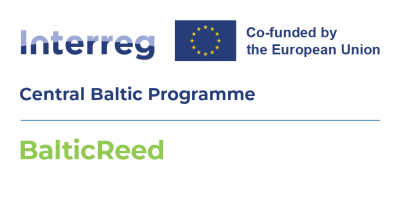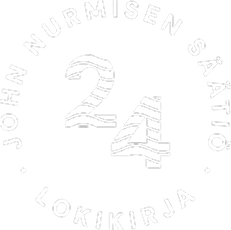
Cutting the nutrient load
Agriculture and forestry are the largest sources of nutrient emissions into the Baltic Sea.
Gypsum treatment
Gypsum treatment reduces nutrient runoff from fields into the sea.
The GYPREG project (aka tackling agricultural phosphorus load by soil amendments) aims to reduce eutrophication of the Baltic Sea by promoting the gypsum treatment of fields in Latvia, Lithuania, Poland, Sweden and the Åland Islands, as it has been proven to be effective.
In 2024, we transported a total of 467 tonnes of gypsum to farmers in the Åland Islands, who spread it over 116 hectares. In addition to spreading gypsum, we collected soil samples to enable RISE Research Institutes of Sweden to study the effects of gypsum treatment on soil structure and the soil’s phosphorus retention capacity.
This project is being funded by the EU’s Interreg Baltic Sea Region programme. Our partners are the Finnish Environment Institute, University of Latvia, Latvian Farmers’ Parliament, Lithuanian Research Centre for Agriculture and Forestry, RISE Research Institutes of Sweden, Race for the Baltic, Institute of Technology and Life Science (Poland).

We are also promoting gypsum treatments by following the Finnish Environment Institute’s NordGypsum project (Denmark + Norway) and the University of Klaipeda’s ECONUT project (Lithuania).
Manure recycling
Transferring manure can reduce nutrient emissions from fields into bodies of water.
The manure recycling project sought to reduce phosphorus emissions in the Archipelago Sea catchment area, and particularly from pork production.
In 2024, the project transferred a total of 3,650 m³ of phosphorous-rich dry manure between six pig farms and 13 crop farms. This volume of manure contained 9,344 kg of phosphorus. The phosphorous-rich manure was spread onto fields that lacked phosphorous. We offered financial incentives for the separation and transfer of manure to both pig and crop farms. We also organised nutrient recycling events for pig farmers in order to raise producers’ awareness of the potential of nutrient recycling, and also to broaden the exchange of information between experts and other farmers.
Treating forestry runoff water
Drained peatland forests generate nutrient emissions.
The re-wetting of peatlands project aims to improve both water protection and the condition of water in forestry areas with the aid of overland runoff and water restoration, and by directing water from forest drainage areas to overland runoff in natural or restored peatlands.
During 2024, we operated on four sites (Alavus, Halsua, Taivalkoski, Ranua) with a total area of more than 200 hectares. We also promoted the implementation of water restoration measures elsewhere in Finland by surveying forest owners’ attitudes towards water restoration and solving practical challenges with the aid of contractual models and communications.
We are cooperating with Tapio and Ii Micropolis in this project. The project was funded by the Ministry of the Environment’s programme to improve water protection.
Mowing and utilising common reeds
Nutrients that have already entered the sea can be reduced by mowing reed.
Coastal reed project
The Coastal reed project aims to collaborate with industry operators to tackle bottlenecks in common reed utilisation and value chains in the Baltic Sea region.
In 2024, we tested a collection subsidy concept where we pay a per-hectare subsidy to cover the costs of collecting and storing reed material. The subsidy was targeted at water boards, village associations, entrepreneurs and other local actors to enable collection. In 2024, aid was requested for ten harvesting sites covering a total area of around 70 hectares.
We continued to work with HELMI harvesting contractors and companies. Our efforts enabled the harvesting and removal of material from 42 hectares of land. We delivered the harvested reed to three companies. The companies involved in the harvesting work participated in product development, including composting trials to develop soil improvement products and litter materials. Some of the material was used by farmers as soil improver.
BalticReed Project
The BalticReed project aims to collaborate with industry operators to tackle bottlenecks in common reed utilisation and value chains in the Baltic Sea region.
In our project, we mow reeds in at least twelve coastal areas of mainland Finland and in the Åland Islands and Sweden.
We mowed a total of 51 hectares of common reeds in Finland during 2024; these reeds were then used in product development, as soil conditioner, and as roofing material.
Through our partnerships with a number of companies, we have started to develop innovative products that utilise common reeds, such as biocomposites, soil improvers, building materials and single-use products. Thanks to its high level of visibility and impact, the European Commission has designated our project as an Operation of Strategic Importance (OSI).
Our partners in this project are the ELY Centre for Southwest Finland, Arcada University of Applied Sciences, the Government of Åland, the County Administrative Board of Östergötland, and Race for the Baltic. The project is co-funded by the EU’s Interreg Central Baltic programme.

Photo: Ilkka Vuorinen
